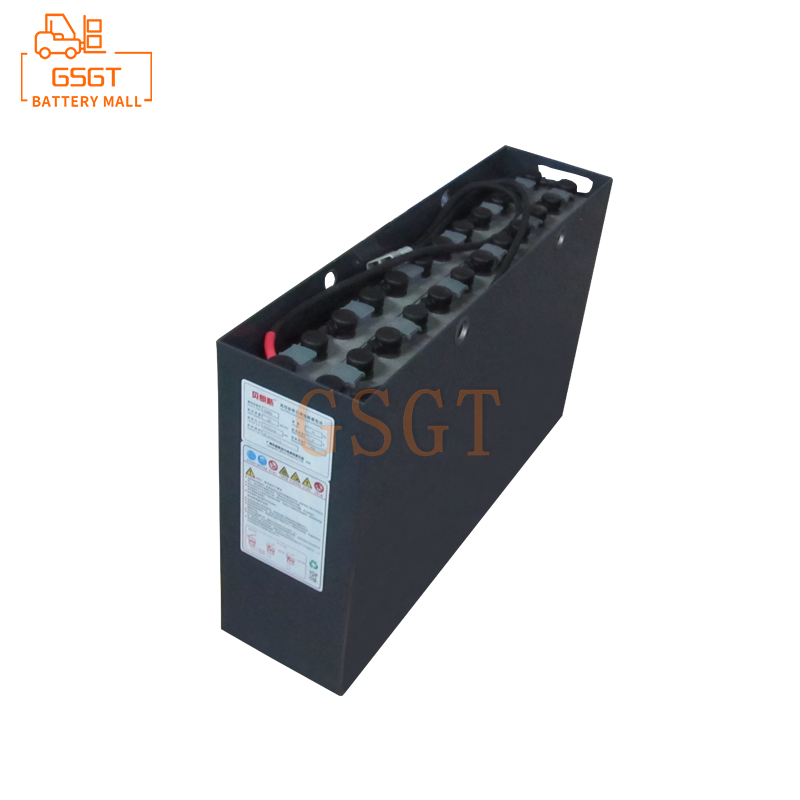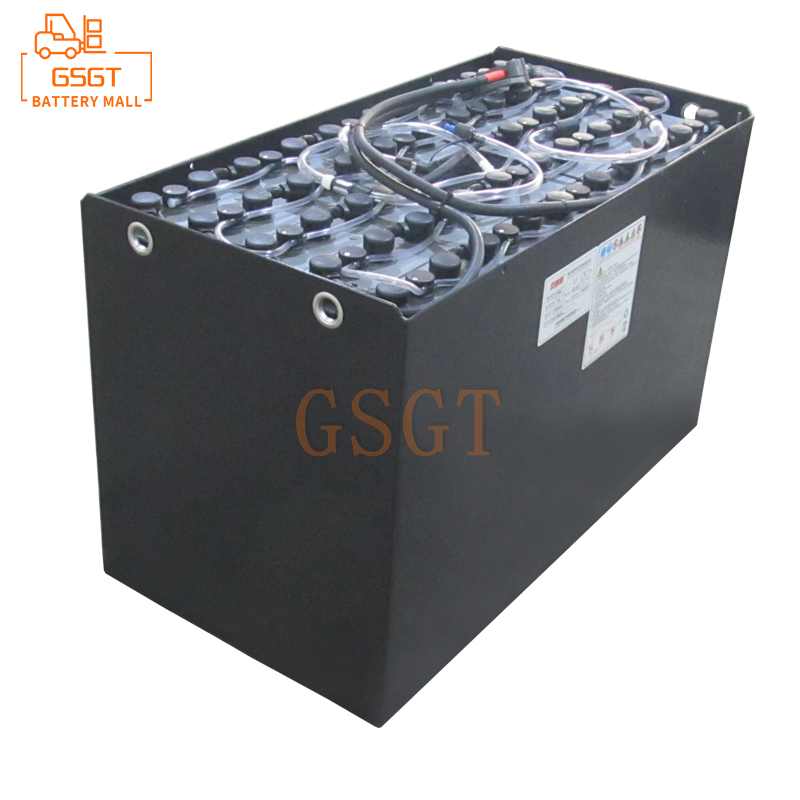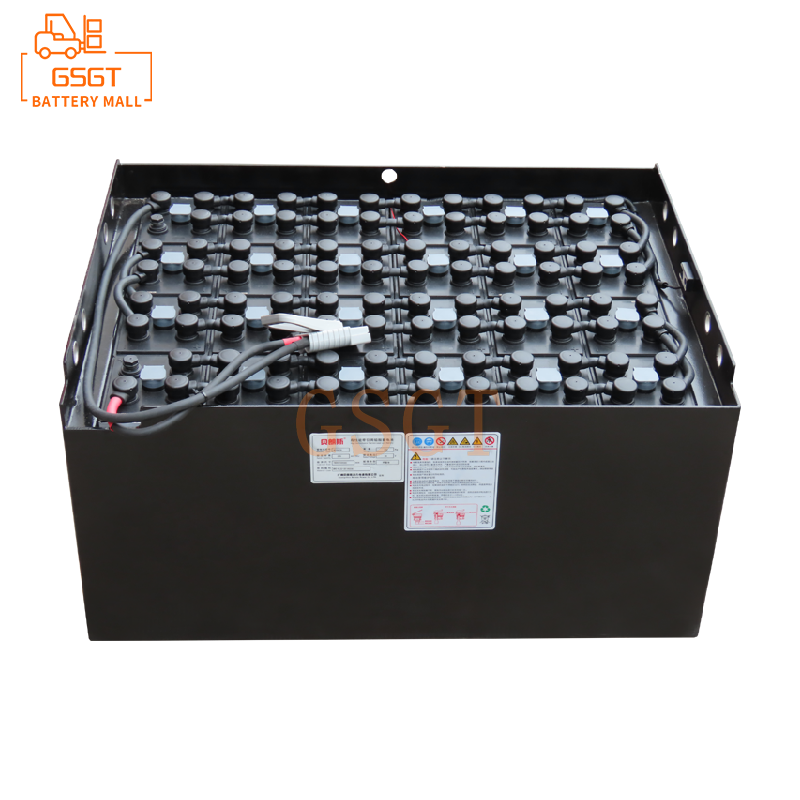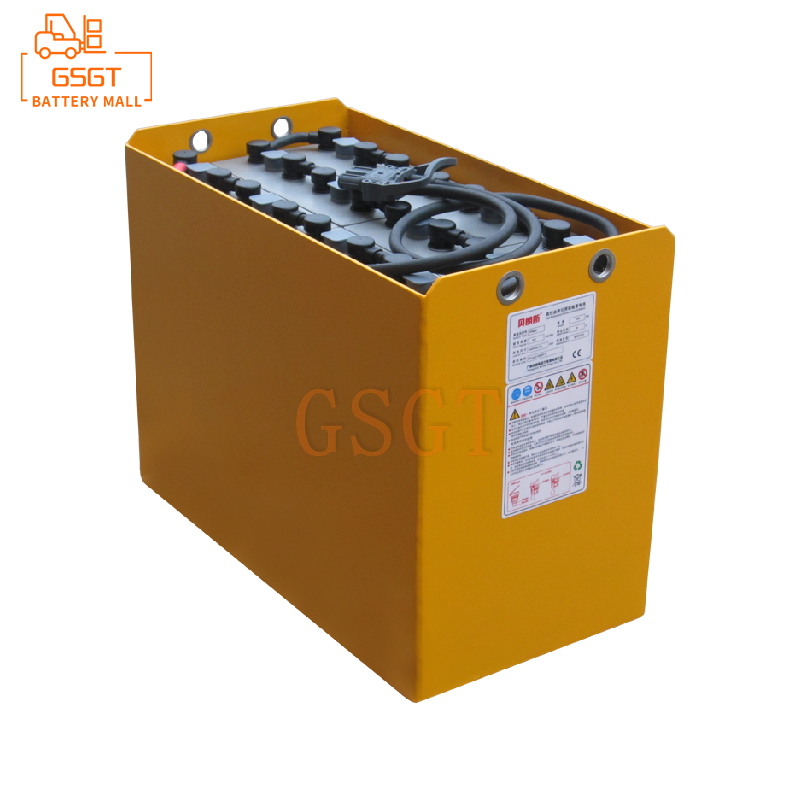Time:2025-06-18 10:14:16
Browse:609
In the modern logistics and warehousing field, forklifts, as indispensable handling equipment, the performance of their power source - lead-acid batteries - directly affects operational efficiency and operating costs. However, many users, due to their lack of understanding of the correct charging methods for forklift lead-acid batteries, have experienced premature battery aging, reduced endurance, and even potential safety hazards. Therefore, mastering the correct charging method for forklift lead-acid batteries is of great significance for ensuring the normal operation of forklifts and extending the battery's service life.
1. Charging Principle of Forklift Lead-Acid Batteries
Lead-acid batteries are a type of chemical power source, and their charging and discharging processes are based on REDOX reactions. During the discharge process, the positive electrode (lead dioxide) and the negative electrode (lead) of the battery respectively undergo chemical reactions with sulfuric acid, converting chemical energy into electrical energy. The charging process is the reverse of the discharging process. By inputting electrical energy through an external power source, the substances at the positive and negative electrodes are restored to their initial states, achieving the storage of chemical energy. Specifically, during charging, under the effect of a direct current power supply, the lead sulfate on the positive plate is oxidized to lead dioxide, and the lead sulfate on the negative plate is reduced to spongy lead. At the same time, the concentration of sulfuric acid in the electrolyte gradually increases. Understanding this principle helps us understand why specific rules and parameters need to be followed during the charging process.
2. Preparations before Charging
(1) Check the appearance and connection of the battery
Before starting to charge, the appearance of the forklift's lead-acid battery should be carefully inspected first. Check if the battery casing is damaged or cracked. If so, it may cause the electrolyte to leak, which not only corrodes the equipment and the ground but also poses a safety risk. At this point, stop using it immediately and carry out maintenance or replacement. At the same time, check whether all connection parts of the battery are firm and ensure that the positive and negative terminal blocks are not loose or oxidized. If oxidation of the terminal is found, it can be gently sanded with sandpaper, and then an appropriate amount of Vaseline or a special battery terminal protector can be applied to prevent further oxidation and ensure good electrical conductivity.
(2) Measure the density and liquid level of the electrolyte
Electrolyte is one of the key factors for the normal operation of lead-acid batteries. The density of the electrolyte should be measured with a hydrometer. Under normal circumstances, the density of the electrolyte should be between 1.28 and 1.30g/cm³ at 25℃. If the density is too low, it might be due to over-discharge of the battery or excessive moisture in the electrolyte. If the density is too high, it may be due to overcharging or excessive evaporation of water. Based on the measurement results, distilled water or dedicated lead-acid battery replenishment fluid should be added if necessary to adjust the density of the electrolyte. Meanwhile, check the electrolyte level, which should be 10 to 15mm higher than the plates. If the liquid level is too low, distilled water should be added. Do not add sulfuric acid or other substances to avoid affecting the battery performance.
(3) Confirm the compatibility of the charging equipment
The charging requirements for lead-acid batteries of forklifts of different specifications and models also vary. Before charging, it is necessary to confirm that the charger being used is compatible with the battery, including whether the output voltage and current of the charger conform to the rated parameters of the battery. Using an unmatched charger may lead to undercharging or overcharging, seriously damaging the battery life. In addition, check whether the power cord, plug and other components of the charger are intact and undamaged, and whether there are any damaged or exposed wires to ensure that the charging equipment is in a normal working condition.
3. Correct charging operation process
(1) Select the appropriate charging mode
The common charging modes for forklift lead-acid batteries include constant current charging, constant voltage charging and staged charging. Constant current charging is to maintain a constant charging current during the charging process. This method is suitable for the initial charging of batteries after deep discharge, but the charging time is relatively long. Constant voltage charging keeps the charging voltage constant during the charging process. As the battery power increases, the charging current gradually decreases. This charging method has a relatively high charging efficiency, but it may cause the initial current to be too large. Staged charging combines the advantages of constant current charging and constant voltage charging. It is generally divided into constant current charging stage, constant voltage charging stage and float charging stage, and is currently a relatively ideal charging mode. In actual operation, the appropriate charging mode should be selected based on the battery's usage and the charger's functions.
(2) Standardize the connection of charging equipment
When connecting the charging device, the output terminal of the charger should be correctly connected to the positive and negative terminals of the battery first. Note that the positive and negative terminals must not be reversed; otherwise, it may damage the battery and the charger, and even cause serious accidents such as fire. After connecting the battery, insert the input end of the charger into the power socket. During the charging process, ensure that the charging area is well-ventilated to avoid the explosion risk caused by the accumulation of hydrogen gas produced during charging. At the same time, smoking, using open flames or any other operations that may produce sparks are strictly prohibited in the charging area.
(3) Control the charging time and temperature
The charging time should be determined based on the battery capacity, the degree of discharge and the charging current. Generally speaking, for a regular forklift lead-acid battery, it takes 8 to 10 hours to be fully charged when an appropriate charging mode is adopted. Avoid overcharging. Overcharging can cause the battery to heat up, accelerate the aging of the battery plates and the evaporation of the electrolyte. Also, do not interrupt charging before the battery is fully charged. Frequent incomplete charging can cause the battery's "memory effect" and reduce its capacity. In addition, during the charging process, the battery temperature should be closely monitored. When the battery temperature exceeds 45℃, charging should be suspended and resumed only after the temperature drops. If necessary, forced air cooling and other methods can be used to assist in heat dissipation.
4. Maintenance and Management after Charging
(1) Standing still and re-inspection
After charging is completed, do not use the forklift immediately. Let the battery stand for 30 minutes to 1 hour to ensure that the electrolyte inside the battery is fully mixed and the voltage stabilizes. After standing still, check the electrolyte level and density again. If necessary, make appropriate adjustments. At the same time, check if there is any residual electrolyte on the battery surface. If there is, wipe it clean with a clean damp cloth to prevent the electrolyte from corroding the battery casing and connecting parts.
(2) Regularly carry out equalization charging
Equalization charging is a method of deep charging batteries, aiming to make the voltage and capacity of each individual battery in the battery pack tend to be consistent and prevent the situation where individual batteries lag behind. For forklift lead-acid batteries, it is recommended to perform equalization charging once every 2 to 3 weeks. The operation method of equalization charging is usually to switch the charger to the equalization charging mode after the normal charging is completed and operate according to the instructions of the charger.
(3) Store idle batteries properly
If the lead-acid battery of a forklift needs to be idle for a long time, it should be fully charged first, and then recharged every two weeks to prevent self-discharge of the battery and resulting in low power. The environment for storing batteries should be dry, well-ventilated and cool, avoiding direct sunlight and damp conditions. The temperature is preferably maintained between 5 and 25 degrees Celsius.
5. Common Charging Issues and Solutions
(1) The charging speed is too slow
If you find that the battery charging speed has significantly slowed down, it may be caused by reasons such as charger failure, poor contact of the charging line or battery aging. First, check whether the output voltage and current of the charger are normal. If not, contact a professional maintenance personnel to inspect and repair the charger. Check whether the connection parts of the charging circuit are loose or oxidized, and repair or replace the faulty circuit. For aged batteries, if they have reached the end of their service life, new batteries should be replaced in a timely manner.
(2) The battery is overheating severely
If the battery gets too hot during the charging process, it may be caused by excessive charging current, too long charging time, internal short circuit of the battery or poor heat dissipation, etc. Adjust the charging parameters of the charger to ensure that the charging current is within the allowable range of the battery. Strictly control the charging time and avoid overcharging. If there is suspicion of an internal short circuit in the battery, it should be sent to a professional maintenance institution for inspection and repair. Improve the ventilation conditions of the charging environment to ensure good heat dissipation of the battery.
(3) The battery life is not durable after charging
If the battery does not last long after charging, it might be due to sulfation of the battery plates, deterioration of the electrolyte or leakage. For batteries with sulfated plates, desulfation charging or the use of dedicated battery repair equipment can be adopted for repair. If the electrolyte deteriorates, all the electrolyte should be replaced. Inspect the forklift's electrical system, locate the leakage points and carry out repairs.
The correct charging method for forklift lead-acid batteries covers multiple aspects such as preparations before charging, operations during the charging process, and maintenance after charging. Only by strictly following the correct charging method and doing a good job in daily inspection and maintenance can the performance of lead-acid batteries be fully exerted, their service life be prolonged, the operating costs of forklifts be reduced, and the efficient and safe operation of logistics and warehousing be ensured.

$1060

$3050

$5710

$1690

MESSAGE
Professional And Efficient
Security
Affordable Price
Professional Services